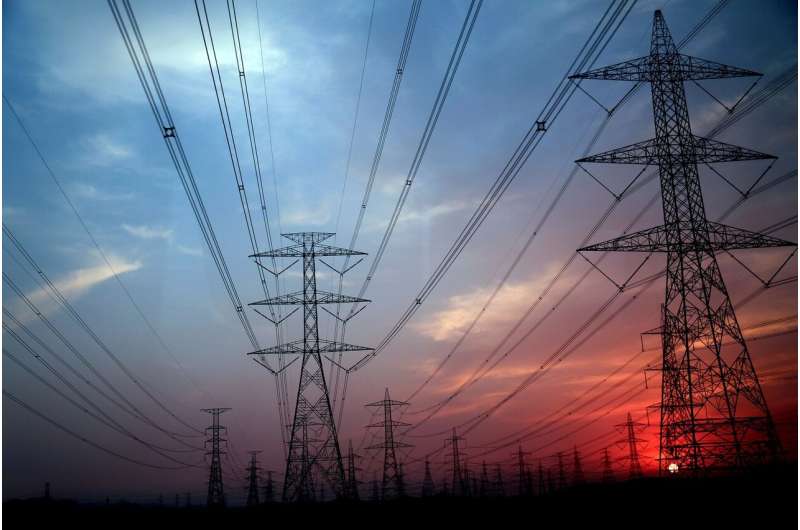Reuters | August 11, 2021 |

Mount Arthur thermal coal mine in Australia. (Image courtesy of BHP.)
BHP Group Ltd said on Wednesday it would allow a vote at its next shareholder meeting on whether the world’s biggest listed miner should disclose details such as capital allocation and life of its fossil fuel assets.

The resolution, proposed by activist investor Market Forces, requests BHP detail how its capital spending in coal, oil and gas assets will align with a scenario in which global energy emissions reach net-zero by 2050.
It also seeks production guidance for the lifetime of those assets and information about expected costs of decommissioning and rehabilitating the sites at the end of their life.
THE RESOLUTION REQUESTS BHP DETAIL HOW ITS CAPITAL SPENDING IN COAL, OIL AND GAS ASSETS WILL ALIGN WITH A SCENARIO IN WHICH GLOBAL ENERGY EMISSIONS REACH NET-ZERO BY 2050
It comes after BHP last week approved $802 million in development spending on oil projects in the U.S. Gulf of Mexico.
“Be it coal, oil, or gas, BHP remains in expansion mode,” said Market Forces campaigner Will van de Pol.
“While the company’s own analysis shows a rapid low-carbon transition makes good business sense, it is simply failing to align its strategy with this outcome,” he said in a statement. “Instead, BHP is betting billions against the Paris climate goals.”
Market Forces said it had lodged the resolution on behalf of more than 100 shareholders including members of the net zero asset managers initiative who have committed to the goal of net-zero greenhouse gas emissions by 2050 or sooner.
BHP, which will hold AGMs on Oct. 14 in London and Nov. 11 in Perth, said in a filing the proposed resolutions were filed by shareholders representing less than 1% of its holdings.
The global miner last week received a separate resolution to increase oversight of lobby groups it associates with to make sure that policies they advocate are in line with the Paris climate accord.
(By Anushka Trivedi and Melanie Burton; Editing by Subhranshu Sahu and Tomasz Janowski)
James Thornhill
Wed, August 11, 2021,

(Bloomberg) -- BHP Group, the world’s top miner, should abandon plans for multi-billion dollar sales of fossil fuels assets and instead responsibly close down the operations, according to an environmental campaign group.
A proposal tabled on behalf of about 100 small investors by Market Forces, which coordinates groups of shareholders on climate issues, calls on the company to wind down production in line with international targets to cut greenhouse gas emissions, and to focus on helping communities to find alternative jobs.
“By providing a leading example of responsibly managing down fossil fuel assets, BHP can preserve and realize the genuine value that exists in these assets, align with global climate goals, and support its workers in the transition to a decarbonized economy,” the group said in a statement. Market Forces and the BHP investors have tabled resolutions to be considered at the company’s annual meeting in Australia later this year.
BHP’s board will set out a response ahead of the meeting, the company said in a statement Wednesday. The investors hold less than 0.01% of BHP’s Australia-listed entity and about 0.006% of the combined group, which includes the miner’s London-traded shares, according to the statement.
BHP is considering an exit from the oil and gas sector and reviewing options including a trade sale, people familiar with the matter said last month. The producer in June agreed to sell its one-third share in a Colombian coal mine and is also progressing plans to offload a thermal coal operation and some metallurgical coal assets in Australia.
Activists who previously had urged the biggest miners and oil majors to rid their portfolios of fossil fuels operations are increasingly changing approach, in recognition that assets are often sold to smaller producers or government-backed firms that operate with far less transparency and typically seek to boost volumes.
While shareholder resolutions seldom win large support, they’re among tools being used by small campaign groups to pressure companies. Lawsuits have been effective too, with Royal Dutch Shell Plc ordered to slash emissions faster than planned in a recent ruling and Australia’s government instructed to consider climate change in mine approvals.
“There’s an increasingly deep and sophisticated understanding of the steps big companies and their investors need to take to play their part in bringing down emissions,” said Will van de Pol, a campaigner at Australia-based Market Forces. “Companies and investors can no longer get away with green-washing and shirking their responsibilities.”
BP Plc is among firms that have faced criticism for pursuing divestment deals that will help the company meet its own net-zero goals, though likely won’t result in lower emissions from the assets that have been sold.
“While divestment addresses stranded asset risk exposure, it fails to manage the reputational risk associated with avoiding responsibility for employee transition support and site rehabilitation,” Market Forces said in its statement.
©2021 Bloomberg L.P.




/cloudfront-us-east-1.images.arcpublishing.com/mco/23CKMUHDKJBUJLD7UUQWMJ2YOA.jpg)
/cloudfront-us-east-1.images.arcpublishing.com/mco/7PRS3G75ZRFFXE6D2SSAND3MHI.jpg)
/cloudfront-us-east-1.images.arcpublishing.com/mco/N3LOJY7J6BDNZLRZJLOI64UP7I.jpg)







